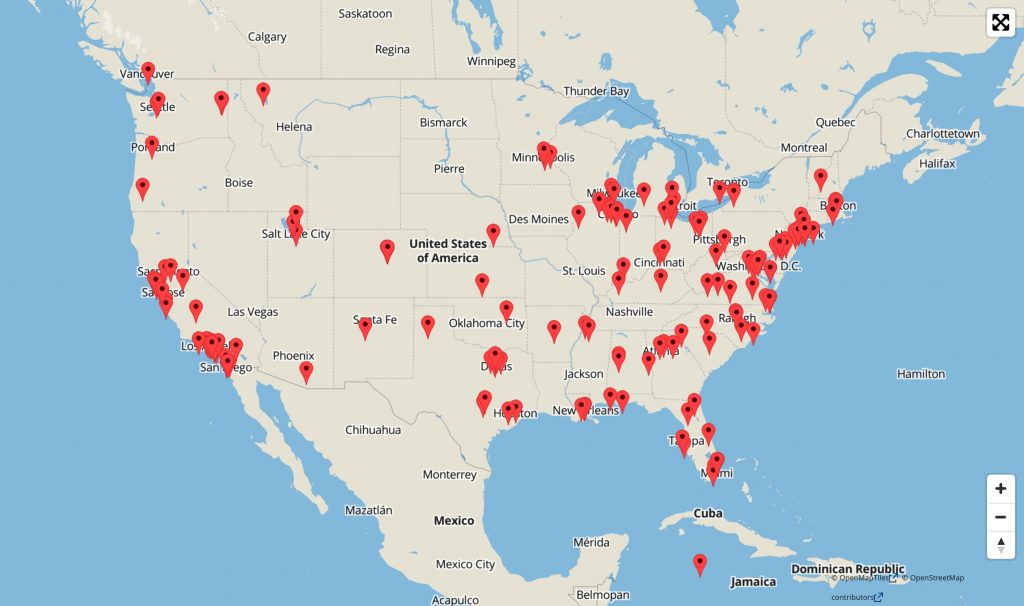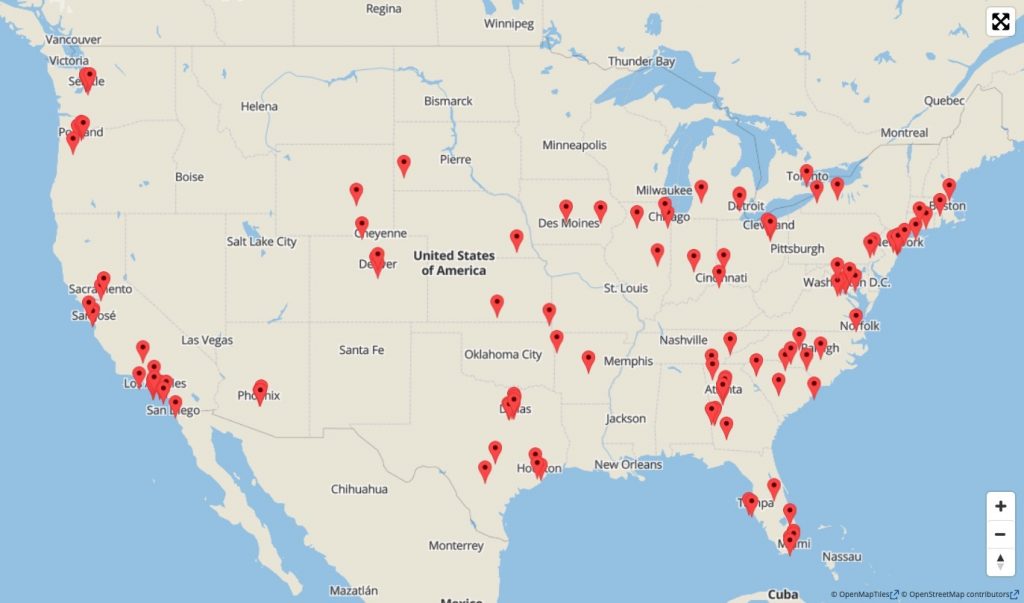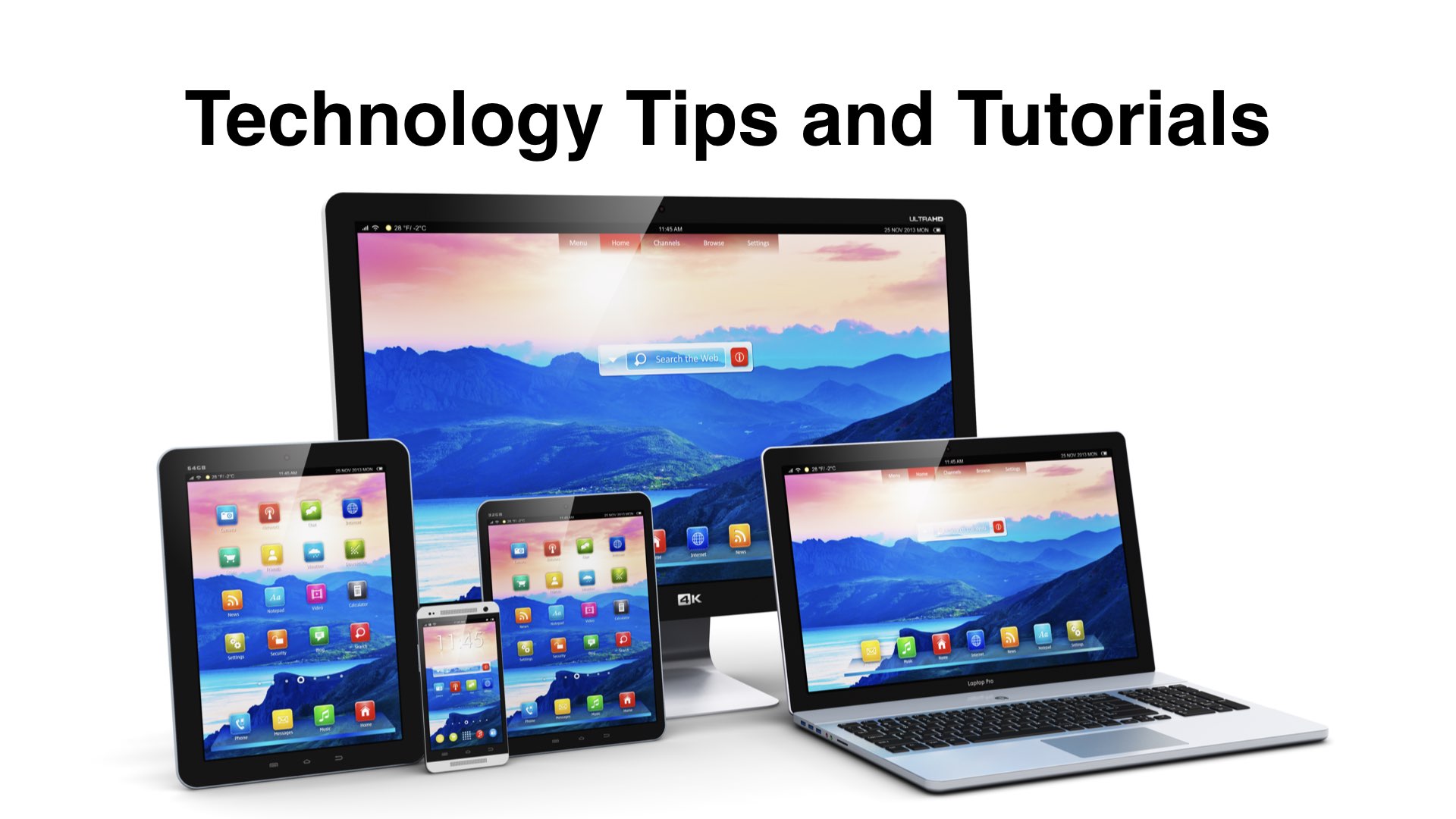For readers with limited time, I’ll offer the quick answer to your question about why the Apple Card application process isn’t working. The quick answer is that it’s broken (for some people some of the time) and there’s no word from Apple as to when it will be fixed. This page will be updated when more is known. For now, here are some essential resources that may be helpful:
- Apple Support: 1-800-MY-APPLE
- Goldman Sachs Support: 877-255-5923
- Goldman Sachs Apple Card Agreement: View PDF
- Official Apple Card web page: View
- Official Apple Card YouTube Videos: View
UPDATE: 26 APR 2020
It’s been about eight months since we first reported this problem. Considering the high volume of people who continue to search for the Apple Pay error and find this article, it seems the problem has not been resolved. One of the most helpful pieces of information a person can have when encountering a tech problem is to know that they are not alone. It isn’t a problem unique to their account, or their phone, or their settings, or their network connection, etc. This can help safe a lot of time. The map below shows the most recent U.S. visitors to this page as of 26 Apr 2020. Read further to learn more about this history of this issue. You’ll want to contact Apple and use the support options listed above to report the problem, and when the customer service people say, “Oh, that’s odd. Nobody else has been having that problem. It must just be you” then you can tell them you’re looking at a map showing people across the country frustrated by the same problem.

UPDATE: 13 SEP 2019
We continue to receive visits to this page from people searching on the error described in the title, so it’s safe to presume that people are still experiencing problems with Apple Card activation as described further down on this page. When Apple provides a public statement regarding this issue or any solution, we will post that here.
UPDATE: 16 AUG 2019
As described below, I was one of many people who had difficulty with the early invitation to apply for the Apple Card. From August 8 to 16, I repeatedly clicked on the link in the invitation email. The process continued to fail as described below. Eventually, on August 16, the application process was successful.
It’s really unfortunate that so many people have had trouble applying for the card using the early invitation link. The product itself is really quite nice and well designed. If you are having difficulty with the process, I’d suggest periodically trying again a few times a day. I’ll write a separate article reviewing the card.
FURTHER READING
Continue reading this document for further details about the Apple Card launch and related issues.
On 6 Aug 2019, Apple began a phased rollout and soft launch of their Apple branded credit card with special email invitations going out to what seem to be select Apple customers. So, online celebrities and social influencers on YouTube like Marques Brownlee (MKBHD) were not left out. The Apple Card video by Marques posted on Aug 9 has already had 3.5 million views in two days. The reviews of the new card have been quite generous and positive so far.
I received an invitation on August 8. This article is my effort to share about my Apple Card experience so far. As the title suggests, it’s not gone well yet. Hopefully a future update to this page will reveal a positive outcome.
There’s an unspoken agreement among product reviewers and social media influencers: “Don’t trash a product or service from a company that’s been gracious enough to include you in an early release of something.” In addition to general professional courtesy, one wants to make sure they aren’t left out of future opportunities. Early access to products or services means you’ll be able to offer exclusive first look reviews which will garner some extra interest, such as the video above with 3.5 million views in 2 days. That’s essentially like receiving a sizable cash payment from a company for reviewing their product. This popularity equity has long-term residual value. So, this is why you’ll typically not see established social media professionals being too harsh in their reviews.
In some cases, reviewers are given an early opportunity to try a product or service, or receive information about upcoming releases, but they must sign a non-disclosure agreement, promising not to share anything they’ve seen. While beta releases of products typically don’t involve non-disclosure agreements, there is an understanding that those who can’t handle the glitches that go with unbaked not-fully-tested products shouldn’t be testing them.
So, with that disclaimer, I’ll continue.
When I followed the instructions in the card application invitation, I clicked on a link in the email and was taken to a special screen in the Apple Wallet where I could begin the application process. When I clicked the Continue button, a message popped up stating: “Apple Card Unavailable. Apple Pay services are currently unavailable. Please try again later.”
I tried again later… and later… and later – over several days. I tried on different devices, from different internet connections. I kept getting that error message. I setup a dedicated iPhone for the application process making sure it was logged into iTunes and iCloud with the Apple ID that had received the invitation. I made sure I met all the device and account criteria stated on the troubleshooting documentation, such as two-factor authentication. Nothing worked.
I checked the official online support forums and learned that many other people were having a similar experience. Numerous discussion threads were started with many people saying they were having the same problem. [1, 2, 3, 4] There were many guesses as to why this was happening, but no official word from Apple as to what was going on.
I called the main customer service number for Apple. The Apple representative I spoke with didn’t have any information about the card application process and didn’t have a support phone number I could call, so they elevated my support request by transferring me to someone who might be able to help. The second person was also unable to help and had no support information to offer. Neither employee had received an invitation for the card yet, so they were unfamiliar with the application process.
I was eventually able to find a support number, only available to those who are part-way into the application process before the error message shows up (thus not available to most Apple employees). I shared that with the Apple employees so they would have the support number.
If you click on the Rates and Terms link under the Continue button, you will be able to read a customer agreement document that can’t be copied, printed, emailed. There’s no link to the document online. The only way to retain a copy of the agreement is to do screenshots and then stitch those images together to form a huge image file. Sometimes the Rates and Terms link doesn’t work, and nothing happens when you click it. It’s fickle. Within the Rates and Terms document, half-way through, you’ll find this statement: “You may also contact Goldman Sachs directly with questions by calling 877-255-5923.” That number is most likely intended to be for existing card holders who have banking questions.
Note: On the Goldman Sachs website, there is an Apple Card customer agreement, but it doesn’t seem to be the same document presented in the iPhone at the time of signup.
I’m planning to call the Goldman Sachs support number. However, because it’s a toll-free number for the sponsoring bank, I don’t believe they will be able to help with technical problems Apple is having. I’ll update this document as I know more about the issue.
LAUNCH LESSONS LEARNED
I think what’s been most valuable about the Apple Card so far, are the lessons we can learn from the launch of the product. Everything that could go wrong, has gone wrong. So, it’s an exceptional comprehensive textbook example we can all learn from. It could form the basis for a best practices approach to product launches.
- Customer Service Training. Before a launch, even with a limited launch, it’s good to get customer service representatives fully trained on supporting the product before customers have it.
- Dedicated Support Channels. Having dedicated support channels for new products can be helpful, and doesn’t require training all support staff – just the specialists. This ensures that trained customer service people will be available by phone, online chat, trouble tickets, or with online support request forms. With the Apple Card launch, no support infrastructure seemed to exist. That’s unfortunate because it’s a great opportunity to test not only the product, but to test and improve the support infrastructure.
- Discussion Forums. Online discussion forums are a great place to learn about customer satisfaction and dissatisfaction. When ignored, they can turn into a place for disgruntled customers vent frustrations and learn about the complaints of others. When customer complaints go unaddressed, this demonstrates that a company simply doesn’t care, and that’s and undesirable perception.
- Error Messages. The error message about Apple Pay services not being available is too generic to be of help to customers. There was no link for more information. No number to call. No error number to lookup. The suggestion to try again later was not helpful because it causes customers to repeatedly try something that isn’t going to be working later. That results in customer frustration. Having more informative and accurate error messages can help with a product launch.
- Feedback. Companies interested in continuous improvement make efforts to listen to their customers and learn about customer experiences before, during, and after purchasing products or services. Companies that don’t provide online feedback opportunities are creating one-way relationships where customers feel like their views aren’t valued. Especially during a new product launch, it’s important to gather feedback to quickly respond and correct any problems. Otherwise, customer frustrations can escalate faster than the company can respond.
- Load Balancing. When services and websites are expected to be overwhelmed with requests, it’s important to have contingency plans in place to handle the excess demand. It’s believed that some of the problem with the Apple Card application issues was related to their systems not being able to process the limited incoming requests. The people power and computing power needs to be adequate for the expected demands.
- Product Testing. Had sufficient in-house product testing been done prior to the soft launch of the Apple Card, the application process issues could have been identified and fixed.
- Security. Sending out an email with a link to a credit card application establishes a customer expectation that financial processes will begin with a link in an email that they should click on. This is not good and sets a bad precedent. A malicious individual or group could send out millions of identical fake invites to harvest Apple user accounts, financial information, and other personal details.
- Status Updates. Apple has a System Status page on their website where customers can find out about outages. This would have been a good place to put information about the Apple Card application processing system. It’s missing from that page.
- Terms and Conditions. When customers enter into an agreement, or are given terms and conditions, they deserve to have a copy of those terms. For many Apple services, customers are able to print, email, or otherwise save the agreements. In the case of the Apple Card, this was not possible. Especially with a financial agreement, customers expect to retain such information.
- Training Videos. It’s helpful to have training videos. However, the Apple Card videos showed up on YouTube before the card was available, showing screens and options that didn’t exist for most users. This creates confusion. No explanation was offered regarding the actual availability of these features.
- Transparency. Apple did not offer a clearly defined explanation of their product launch. Instead, invitations began to appear seemingly randomly. There was no announcement anywhere to explain that there were technical difficulties, and no suggestion for what customers should do, or how long they should wait. As mentioned above, there was no information on the official Apple Status Page about the issues.
DOCUMENT PURPOSE.The purpose of this document is to engage a limited number of thoughtful tech industry people and inspire some reflection on how product launches can be more successful. It’s not being promoted or advertised, and this page is not monetized. Comments and discussion below are appreciated.
DOCUMENT INTEREST. In the brief hours since this article was posted, there have been visitors from all over the United States finding this page. See the maps below. Considering that we’ve not advertised it, this is an indication that people are searching on this error message. It’s an error message that would only be visible to those who received the early invitation to Apple Card. This makes the small number of visitors more significant. The map below shows visitors as of 16 Aug 2019.

